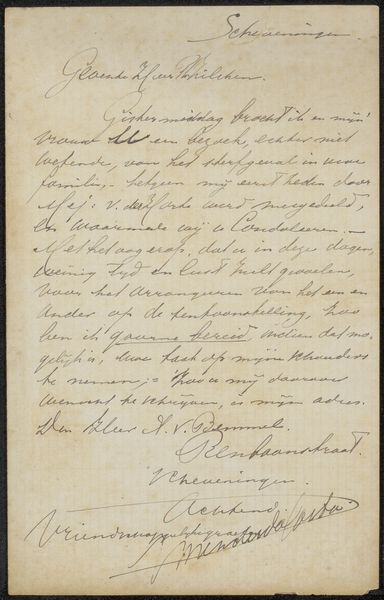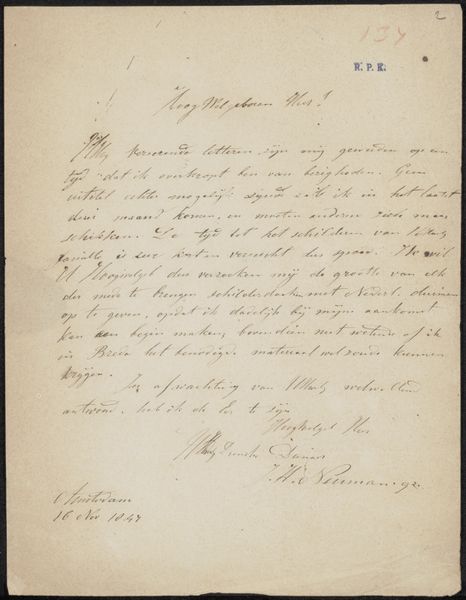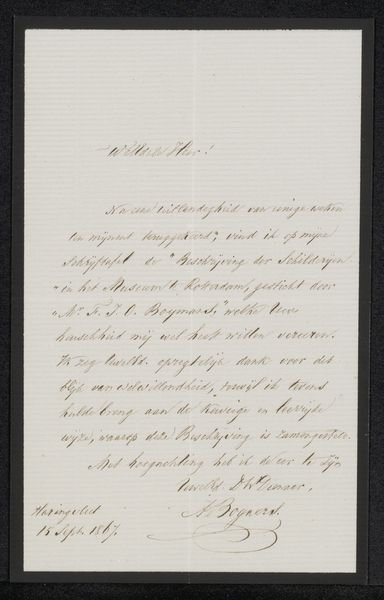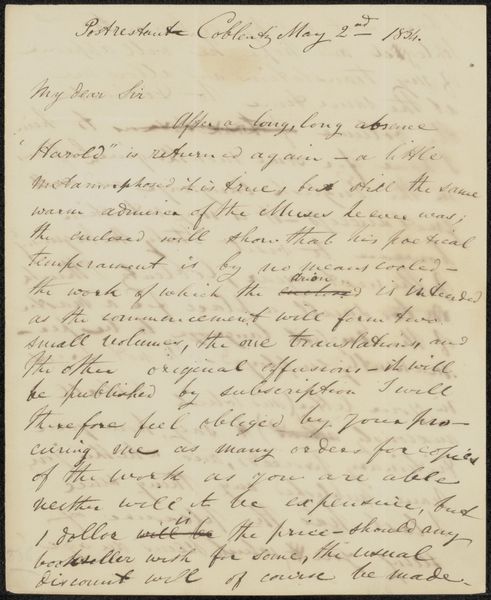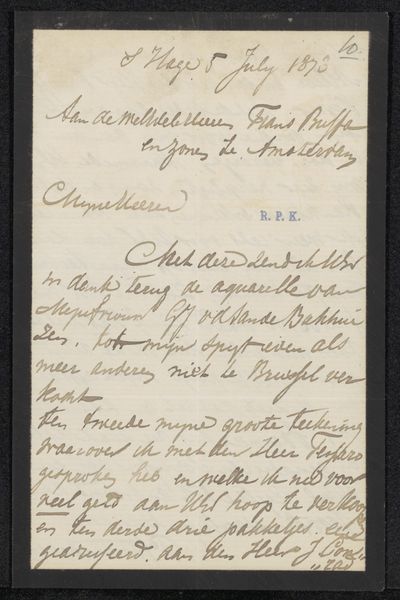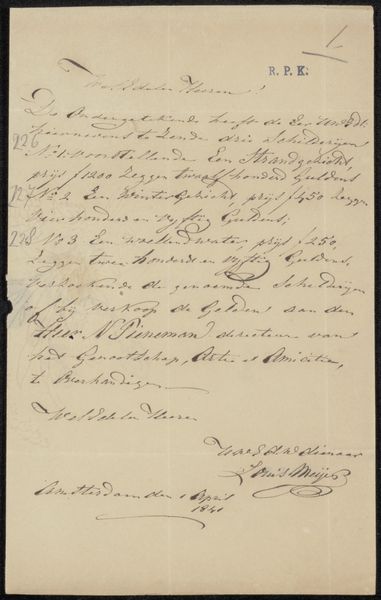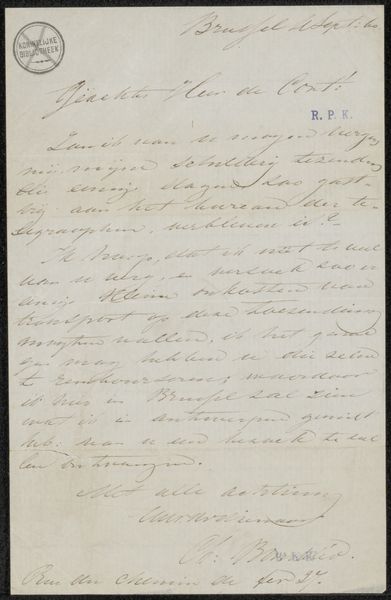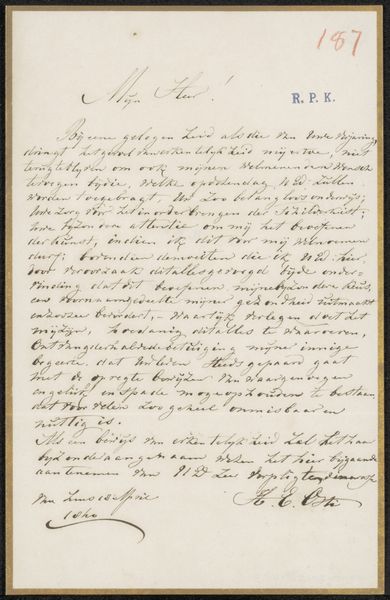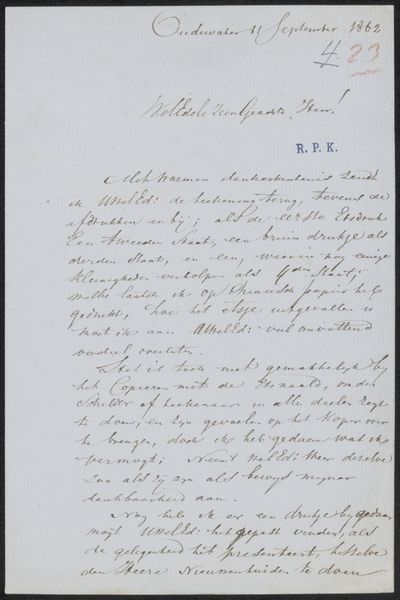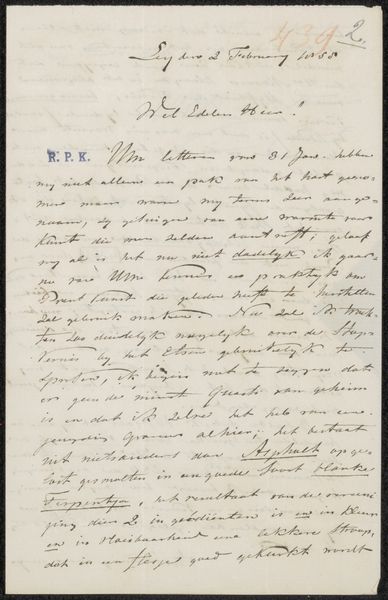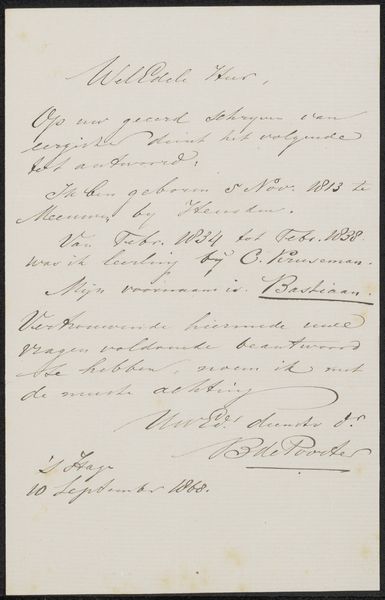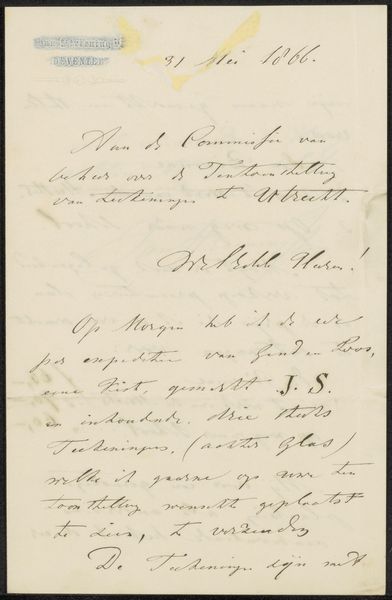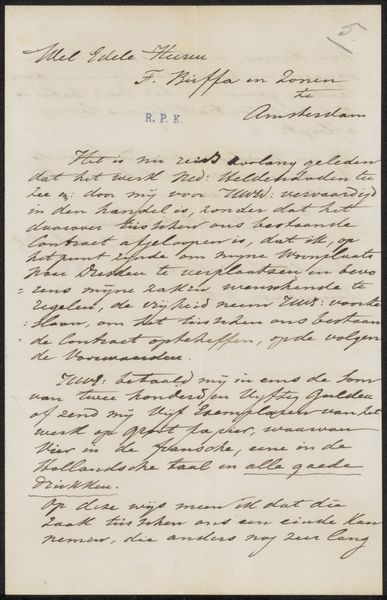
drawing, paper, ink
#
drawing
#
paper
#
ink
#
calligraphy
Copyright: Rijks Museum: Open Domain
Curator: Pieter Stortenbeker’s “Brief aan Frans Buffa en Zonen,” dating possibly from 1872 to 1876, catches my eye immediately. There's a raw, intimate feel to it, almost voyeuristic in the sense that we’re viewing a private correspondence. Editor: Indeed. Drawn with ink on paper, currently residing at the Rijksmuseum, this letter presents itself less as a grand artistic statement and more as a fleeting moment captured. I find the calligraphic elements to be particularly compelling when thinking about issues surrounding access to literacy, gender, class, and historical power structures of communication in 19th-century Dutch society. Curator: Absolutely, but I also think we can appreciate the aesthetic value without solely situating it within historical power dynamics. It invites us to consider the material conditions of art creation—the artist, their tools, the context of artistic communities within 19th century Europe, where such dialogues were common. It serves as a lens to view networks and artistic movements. Editor: That’s precisely what is missing here! To isolate it purely on its formal qualities neglects a vital discourse concerning Dutch nationalism and intellectual property and the role art dealers like Frans Buffa en Zonen played. It is necessary to acknowledge how such artifacts reflect broader narratives around the distribution of knowledge and cultural authority in a period marked by burgeoning publishing industries. Curator: I acknowledge your points concerning larger systemic influences. What moves me is simply the tangible nature of ink meeting paper; that immediacy transcends contexts for me, hinting at human vulnerability expressed on vellum in moments of candid disclosure, perhaps with anxieties revealed by the penmanship and grammar that hint at education as privilege and access in itself—as material acts within a capitalist culture centered around scarcity as it applies to everything. Editor: Then, considering it from these critical standpoints offers us the unique potential for the letter to foster new lines of discussion about authorship, social identity and modes of economic exchanges shaping creative pursuits then versus current manifestations and expressions of agency and selfhood by a 19th century person named "Pieter Stortenbeker," writing intimately to peers about real events occurring. Curator: Precisely, let us keep in mind that historical dialogues like this provide essential windows toward deeper reflections of cultural capital, power constructs around artistic distribution, etc., thereby making space for transformative discourse across disciplines of studies.
Comments
No comments
Be the first to comment and join the conversation on the ultimate creative platform.
